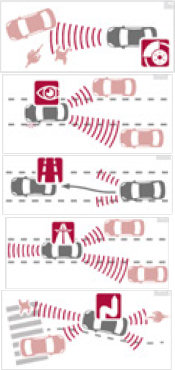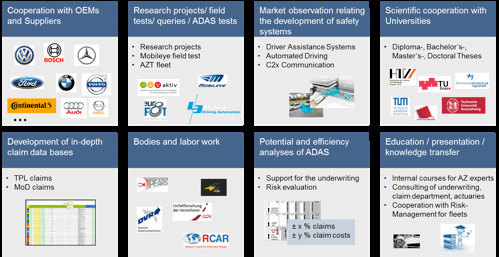More information
Main author
Johann Gwehenberger
Co-Authors
Jürgen Redlich, Marcel Borrack, Christoph Lauterwasser
Type of media
Publication type
Lecture
Publication year
2018
Publisher
27. EVU Conference, Dubrovnik
Citation
-

It has been demonstrated that advanced driver assistance systems (ADAS) are making a significant contribution toward increasing road safety. For more than a decade, the Accident Research Department of the Allianz Center for Technology (AZT) has been analyzing their safety potential as part of several research projects. This paper will first examine the methods used to analyze the potential for loss prevention and the effectiveness of driver assistance systems. Using these analysis methods, AZT – in cooperation with automobile manufacturers Audi, Daimler and Volvo – has investigated the efficiency and the limits of front collision warning systems and autonomous emergency braking systems in passenger cars. The results are presented in the overview.
Another focus of the paper is a GDV study on forecasting the influence of assistance systems and automated driving functions on the claims trend in Germany that was conducted by an interdisciplinary working group of engineers, mathematicians, insurance experts and accident researchers. The accident-prevention potential (relevance) of specific ADAS systems was analyzed using real current accident situations and combined with motor vehicle insurance claims data. Already proven potential effectiveness (efficiency, utilization) are supplemented with the assessment by experts in the project group. The results show a 7% to16 % reduction in motor vehicle insurance claims payments up to 2035 compared to 2015 due to ADAS and HAD systems. This figure includes already anticipated increases in repair costs of 3% to 7% resulting from components and/or sensors for such systems and the change in the number of passenger cars (vehicle stock) up to 2035.

(EVU-members can download the full article)